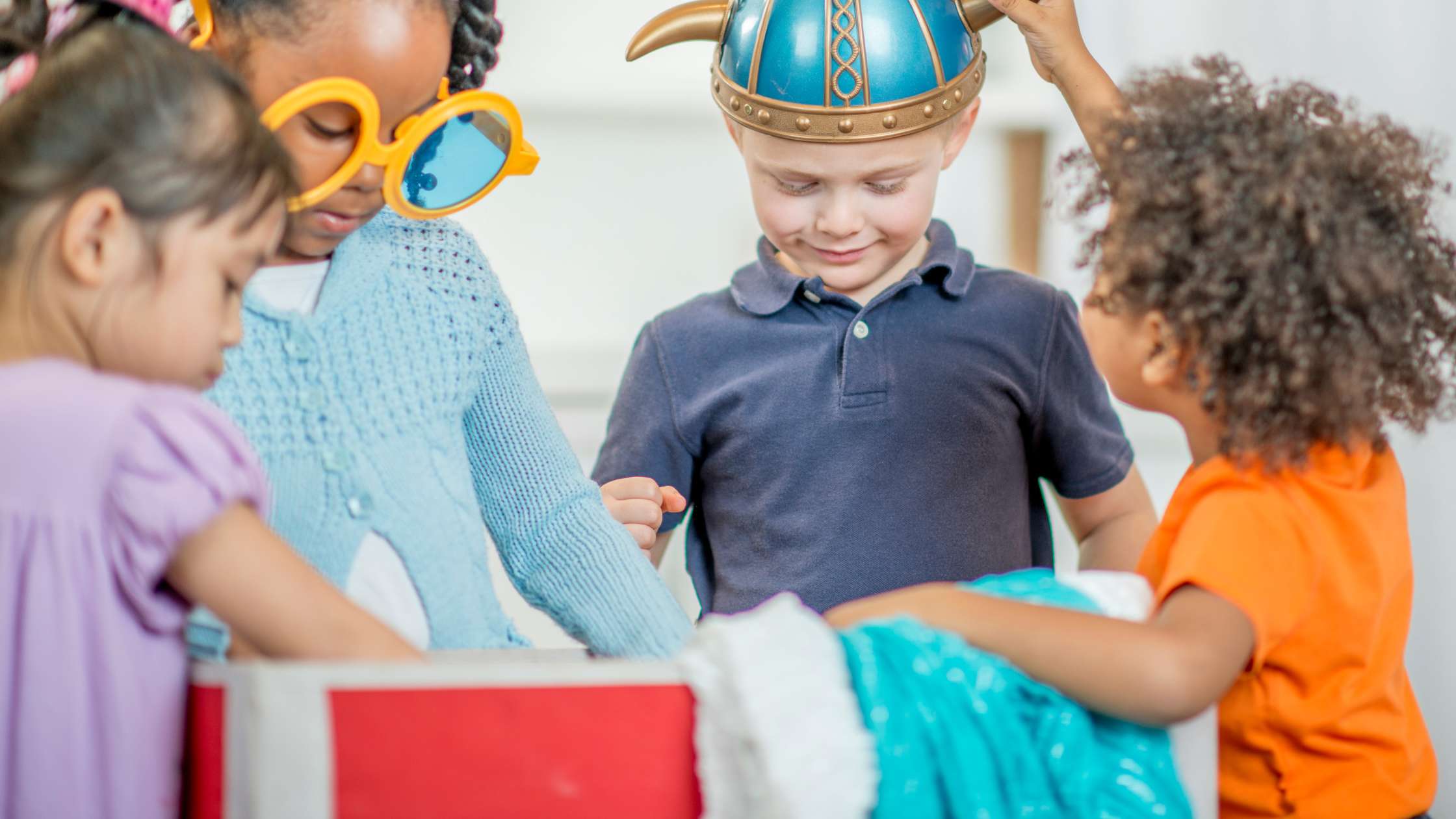
Best Toys for Ages 2-7 : Encouraging Creativity and Imaginative Play

Create By The Nurtured Nest Team
Nurtured Nest’s content is developed by parenting educators, healthcare professionals, and real parents—so it’s always grounded in evidence and real-life experience. Learn more about our team.
Best Preoperational Stage Toys for Ages 2–7
Welcome back to our Stages of Play series, where we help you make sense of the toys in your house and streamline your play space! Today, we’re diving into the 2nd Stage of Play: the Preoperational Stage (ages 2–7).
If you’re new to the series, here’s a quick recap of the framework. Inspired by Jean Piaget—the psychologist who famously said, “Play is the work of childhood”—we’re using his Four Stages of Cognitive Development to guide toy selection. These stages provide insight into the kinds of toys that best engage kids at different developmental milestones.
What is the Preoperational Stage?
During the Preoperational Stage, children begin to learn through functional play (repetitive actions with no specific goal) and imaginative play (pretending and creating). This is a critical time for offering toys for cognitive development that support open-ended exploration, storytelling, and real-life role play.
Ideal Preoperational Toys for This Stage
- Encourage creativity: Think art supplies, building sets, magnetic tiles, and blocks.
- Support pretend play: Dolls, dress-up clothes, action figures, or costumes.
- Help kids explore real-life experiences: Mini kitchens, grocery stores, or doctor kits let kids mimic and process everyday routines.
3 Questions to Ask Before Buying Preoperational Toys
-
Does it encourage creativity?
Open-ended toys like crayons, blocks, or magnetic tiles invite endless ideas. -
Does it act as a catalyst for imaginative play?
Figurines, costumes, and dolls help children create characters and stories. -
Does it help them understand real-life experiences?
Playsets like dollhouses or pretend grocery stores give kids tools to process daily life.
1 Thing to Avoid in Preoperational Toys
Avoid toys that “do the playing” for your child. Overly automated toys (with lights, sounds, or limited functionality) can turn kids into passive observers. Simple, open-ended options foster more meaningful learning and play.
Organizing Your Play Space for the Preoperational Stage
Now’s a great time to take stock of your space. Use this stage as a guide:
- Keep toys that spark creativity, pretend play, and storytelling.
- Donate, rotate, or store toys that don’t align with your goals.
Why Fewer Toys Work Better
Research shows that kids play more deeply and for longer periods when they have fewer toys available. A simplified play space helps children focus, use their imagination more richly, and form stronger cognitive connections.
Toy Recommendations for the Preoperational Stage
- Small World Toys: Dollhouses, action figure playsets, and imaginative environments
- Blocks & Building Sets: Wooden blocks, magnetic tiles, or cardboard sets
- Dress-Up Clothes: Princess dresses, firefighter costumes, doctor kits
- Dolls, Figurines & Stuffed Animals: Little People, plush toys, character figurines
- Picture Books: Books remain a valuable tool for connection, creativity, and vocabulary growth

FAQs About Preoperational Stage Toys
What are the best toys for 2–7 year olds?
The best toys for this age group are those that support imaginative play, creative thinking, and real-life role play. Think blocks, dress-up clothes, dollhouses, and open-ended art supplies.
What is functional play?
Functional play involves simple, repetitive actions that help develop motor skills and understanding of cause-and-effect—like stacking blocks, scooping, or filling and dumping containers.
Why is pretend play important?
Pretend play builds social-emotional skills, language development, and creativity. It allows kids to explore emotions, practice problem-solving, and act out real-world scenarios in a safe way.
Looking for More Parenting Support?
At Nurtured Nest, we offer expert-led, self-paced courses for parents that support you through every stage of your child’s development—starting before birth and growing with your family.

